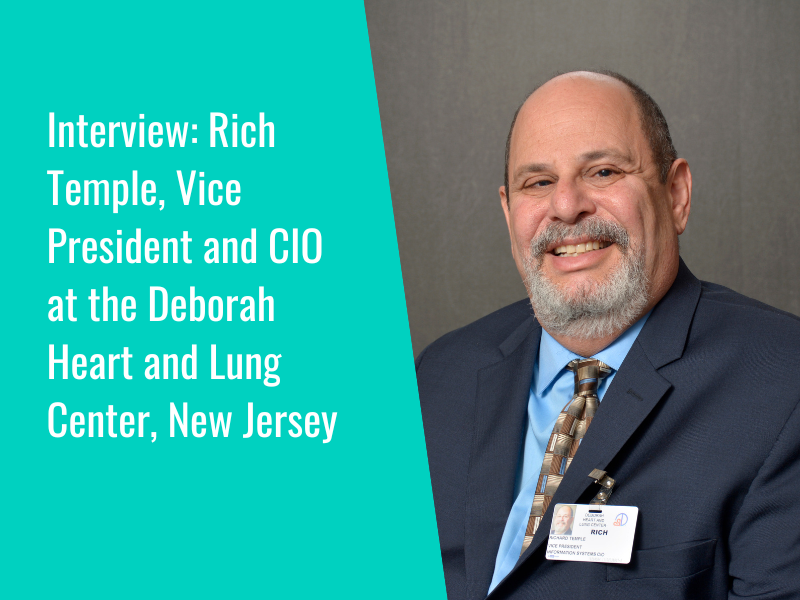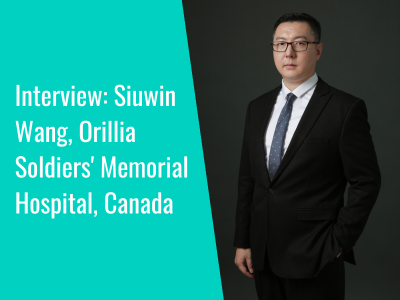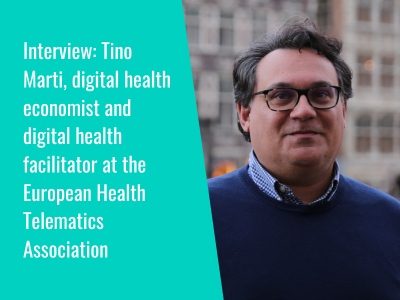For our latest interview, we caught up with Inderpal Kohli, vice president and chief information officer at Englewood Hospital, New Jersey, to hear his insights on digital transformation, projects, priorities and challenges in the digital health space.
Inderpal introduced himself by explaining how his career has been in the IT sector since leaving high school, including roles in programming and project management, and that crossing over into the health sector came up as a chance to work on a IT project for healthcare.
“I landed at one of the best places I could have, Columbia University Medical Center, where cutting-edge informatics research was taking place,” he shared, “and I got my first insight into how all of the innovations we were working on behind the scenes in the lab were actually delivered in terms of patient care by the bedside.”
Inderpal has worked in the healthcare sector ever since and noted that he had amassed more than two decades of experience in driving innovations and working on enterprise information systems, working within his current role at Englewood to provide strategic direction and oversight of IT functions, advance tech infrastructure, and support the growth of the organization.
Digital transformation at Englewood Health
Inderpal shared some of the major digital projects that have been undertaken at Englewood Health during his time as VP and CIO, including patient engagement and self-serve opportunities, including the expansion of electronic medical records, imaging solutions, and medical device technology.
“One of our overall goals has been to reach out to our patients and make their interactions with our system more digital, so that they can interact with us when, where, and how they want to interact with us,” he said.
Inderpal commented that the COVID pandemic accelerated digital transformation in Healthcare, describing how his team “delivered three years’ worth of transformation in three months”, with the pandemic leading them to rethink their strategy and emphasising the importance of agility. It also had an impact on attitudes: “Most people now realize that virtual care is not a bad thing and that patients don’t always need to attend in person for many things.”
Recent digital projects
We asked Inderpal what digital projects he and his team had been working on recently. He talked about how one of his initial priorities was developing a comprehensive digital strategy for the organisation and a roadmap to follow, which formed a multi-year plan.
“One of our goals is to offer patients our services or interactions in the way that they want,” he said. “Healthcare is obviously more complicated than ordering food; but that doesn’t mean patients don’t desire that experience and that kind of ease. That’s our goal. We are focusing on that digital front door, on our outreach to patients, offering them solutions and service capabilities, and getting them engaged in their own care.”
With the organization spanning 150 locations and over 600 providers across a range of specialties, Inderpal spoke of his hopes to provide a seamless experience for patients. “Once you are with us, my goal will be to take the best care of you whether you need a specialty appointment or a diagnostic test. We want to take care of that in a seamless manner for you.”
Inderpal also shared his aims to promote “a merging of analog and digital care,” creating a consistent experience between virtual and in-person interactions with patients.
“Remote patient monitoring is a program that we are expanding – we want to help you when you are not physically at one of our locations with technology-enabled care management outside of our four walls. We need to be nimble enough, and our execution needs to be nimble enough to roll in some of those digital initiatives. So far, our work in this area has supported this and allowed us to start working on including exciting initiatives like generative AI into our strategy.”
Moving on to discuss electronic patient records at Englewood, Inderpal told us that the organisation has a single patient record across the entire continuum of care so that “the experience remains the same no matter where staff is interacting with the patient”, and so that information is available wherever patients are in the organisation.
Using information and data analytics to inform decision-making is “inherent in how Englewood operates”, he added.
“We use data for running our operations and making strategic and growth-related decisions, and we also use it to identify gaps in our patient population, for improving patient experience and improving care quality. We look at infection rates, we look at patient satisfaction rates. Data drives a lot of decisions and our initiatives to make sure we keep improving our care and our care delivery to patients.”
Digital priorities for the next 12 months
What are Inderpal’s priorities for the next 12 months around digital and data?
On the continued expansion of the organisation’s digital front door and patient engagement initiatives, he said: “We’re working on various campaigns, whether it’s something like mammography or missed annual screening. Or if patients have not followed up on an order from their doctor, we’re looking at different ways to reach out to them and to make it really easy for them to schedule an appointment.”
Inderpal also shared priorities, including the expansion of the organization’s generative AI tool, with plans to provide some level of automation, helping clinicians but also expanding it to offer more to patients in terms of capabilities.
“We’re looking at developing a generative AI-based virtual agent, where patients can have a normal conversation and get the information they’re looking for, to schedule an appointment, or ask to talk to someone on the phone. Then there’s the idea of running a large language model to synthesize a large amount of data within our patient record, to present relevant patient information to the clinician at a point of service.”
He continued: “We’re also exploring ambient charting, where instead of a physician sitting on a computer taking notes from conversations with patients, there’s an ambient listening agent. It will draft a fully structured clinical note for them to review in less than a minute, even suggesting coding or identifying care gaps. That would not only help physicians in their work but also give them more face time with patients.”
We asked Inderpal what role things like patient portals and mobile apps played in his organization’s efforts to engage with and empower patients.
“Our digital patient portal is our first entry point, which holds comprehensive patient information, test results, visit summaries, doctor’s notes, imaging access, and appointment scheduling,” he shared. “The digital part of it goes beyond that, proactively sending text messages and emails to remind patients of upcoming appointments and such. The reality is that we all go and see someone when we’re sick; but it’s the preventative care that we need to focus on, and that will manifest itself in a healthier population.”
Ultimately, Inderpal said, his job is “to ensure that my organisation runs smoothly, balancing that with growth and supporting growth with technology. I go to technology to help me run my organisation as much as I can, automating monitoring, adding new tools. We need to make sure that when we build something, we can scale-up quickly, so that’s again the planning part of it, and transformation is key. Everyone likes the big transformations, but I feel the impact starts with small transformations – you build support, and then you can keep building from there.”
Sharing learnings
As a final thought, we asked Inderpal what piece of advice or learning he would like to go back and share with his younger self from his journey in digital health to date.
“In healthcare, technology is not the job,” he stated. “Technology is not the primary focus – it’s there to assist with the care of patients. So a tool or a solution that would be implemented in a few months in any other industry may take well over a year here, and for a very valid reason. The tool needs to conform to the workflow of taking care of patients. I learned this initially with some level of frustration on how much time we spend on optimizing workflows and optimizing the tool to meet the workflow needs. You need to be even more nimble about your approach and try something out to see if that clicks with your population, then expand it, rather than looking for a ‘big bang’ deployment.”
We’d like to thank Inderpal for his time and insights.
- 1
- 2














